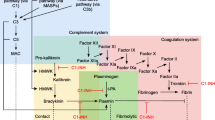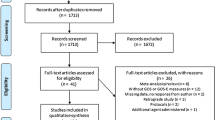Abstract
The present studies were conducted to test whether the outcome of severe head injury is improved by early administration of the synthetic corticosteroid triamcinolone. In a prospective, double-blind, multicenter clinical trial, 396 patients with severe head injury were randomized to a steroid group (n=187) receiving 200 mg triamcinolone acetonide (Volon A soluble) i.v. within 4 h after trauma, followed by 3×40 mg/day i.v. for 4 days, and 3×20 mg/day i.v. for a further 4 days, and a placebo group (n=209) receiving injections which did not contain any active drug. The placebo group was subjected to the same standard treatment procedures. Clinical features were not different between the groups upon admission to hospital. Subdural hematoma, epidural hematoma, and focal supratentorial contusion were among the most frequent diagnoses. The result of treatment with triamcinolone was assessed at discharge from the hospital and at 1 year after trauma. using the Glasgow Outcome Scale. Differences in favor of steroid treatment could be detected with regard to the patients' condition at discharge (P=0.0634). More patients with steroids had a good recovery (49.2% vs 40.7%), and fewer died (16.0% vs 21.5%). Differences in outcome were even more pronounced (P<0.0145) in patients with a focal lesion and a Glasgow Coma Score on admission of <8 (n=93). In this group, 34.8% of the patients made a good recovery, as against 21.3% of the placebo group; mortality was also lower in the verum group (19.6% vs 38.3%). The results indicate that a major subgroup of patients with severe head injury benefits from early administration of triamcinolone. Efficacy of the treatment can be expected, in particular, in patients with a focal cerebral lesion and a Glasgow Coma Score of <8 on admission. Administration of steroids beginning at the scene of an accident would therefore be beneficial in these cases.
Similar content being viewed by others
References
Galicich JH, French LA (1961) The use of dexamethasone in the treatment of cerebral edema resulting from brain tumors and brain surgery. Am Pract Dig Treat 12: 169–174
Bauer RB, Tellez H (1973) Dexamethasone as treatment in cerebrovascular disease. 2. A controlled study in acute cerebral infarction. Stroke 4: 547–555
Norris JW, Hachinski VC (1986) High dose steroid treatment in cerebral infarction. Br Med J 292: 21–23
Tellez H, Bauer RB (1973) Dexamethasone as treatment in cerebrovascular disease. 1. A controlled study in intracerebral hemorrhage. Stroke 4: 541–546
Poungvarin N, Bhoopat W, Viriyavejakul A et al. (1987) Effects of dexamethasone in primary supratentorial intracerebral hemorrhage. N Engl J Med 316: 1229–1233
Chyatte D, Fode NC, Nichols DA, Sundt TM Jr (1987) Preliminary report: effects of high dose methylprednisolone on delayed ischemia in patients at high risk for vasospasm after aneurysmal subarachnoid hemorrhage. Neurosurgery 21: 157–160
Sparacio RR, Lin TH, Cook AW (1965) Methylprednisolone sodium succinate in acute craniocerebral trauma. Surg Gynecol Obstet 121: 513–516
Gobiet W, Bock WJ, Liesegang J, Grote W (1976) Treatment of acute cerebral edema with high dose of dexamethasone. In: Beks JWF, Bosch DA, Brock M (eds) Intracranial pressure III. Springer, Berlin Heidelberg New York, pp 231–235
Faupel G, Reulen HJ, Müller D, Schürmann K (1976) Double-blind study on the effects of steroids on severe closed head injury. In: Pappius HM, Feindel W (eds) Dynamics of brain edema. Springer, Berlin Heidelberg New York, pp 337–343
Cooper PR, Moody S, Clark WK, et al. (1979) Dexamethasone and severe head injury. A prospective double-blind study. J Neurosurg 51: 307–316
Gudeman SK, Miller JD, Becker DP (1979) Failure of high-dose steroid therapy to influence intracranial pressure in patients with severe head injury. J Neurosurg 51: 301–306
Saul TG, Ducker TB, Salcman M, Carro E (1981) Steroids in severe head injury. A prospective randomized clinical trial. J Neurosug 54: 596–600
Braakman R, Schouten HJA, Blaauw-van Dishoek M, Minderhoud JM (1983) Megadose steroids in severe head injury. Results of a prospective double-blind clinical trial. J Neurosurg 58: 326–330
Giannotta SL, Weiss MH, Apuzzo MLJ, Martin E (1984) High dose glucocorticoids in the management of severe head injury. Neurosurgery 15: 497–501
Dearden NM, Gibson JS, McDowall DG, Gibson RM, Cameron MM (1986) Effect of high-dose dexamethasone on outcome from severe head injury. J Neurosurg 64: 81–88
Becker DP (1979) Viewpoint: severe closed head injury. Neurosurgery 4: 277–278
Tindall GT (1979) Viewpoint: severe closed head injury. Neurosurgery 4: 277–278
Hall ED (1982) Glucocorticoid effects on central nervous excitability and synaptic transmission. Int Rev Neurobiol 23: 165–195
Braughler JM, Hall ED (1982) Correlation of methylprednisolone in cat spinal cord with its effects on (Na+, K+)-ATPase, lipid peroxidation, and alpha motor neuron function. J Neurosurg 56: 838–844
Young W, Flamm ES (1982) Effect of high-dose corticosteroid therapy on blood flow, evoked potentials, and extracellular calcium in experimental spinal injury. J Neurosurg 57: 667–673
Umlauf B, Trappe A, Haack D, Rampel C, Krämer W (1983) The influence of triamcinolone acetonide on raised ICP. In: Ishii S, Nagai H, Brock M (eds) Intracranial pressure V. Springer, Berlin Heidelberg New York, pp 772–776
Braughler JM, Hall ED (1985) Current application of “high-dose” steroid therapy for CNS injury. A pharmacological perspective. J Neurosurg 62: 806–810
Meinig G, Deisenroth K (1990) Dose- and time-dependent effects of dexamethasone on rat brain following cold-injury oedema. Acta Neurochir Suppl (Wien) 51: 100–103
Meinig G, Deisenroth K, Behl M, Khalifa A (1986) Dosis-Wirkungs-Beziehung von Dexamethason beim Kälteläsion-induzierten Hirnödem der Ratte. In: Walter W, Krenkel W (eds) Jahrbuch der Neurochirurgie. Regensburg & Biermann, Münster, pp 177–191
Gaab MR, Dietz H (1989) Ultrahohe Dexamethason-Kurzzeittherapie bei Schädel-Hirn-Trauma. Rationale und Design einer Multicenter-Studie. Neurochirurgia 32: 93–100
Kobrine AI, Kempe LG (1975) Studies in head injury: part II. Effect of dexamethasone on traumatic brain swelling. Surg Neurol 1: 38–42
Yamaguchi M, Shirakata S, Taomoto K, Matsumoto S (1975) Steroid treatment of brain edema. Surg Neurol 4: 5–8
Hall ED, Braughler JM (1982) Glucocorticoid mechanisms in acute spinal cord injury. A review and therapeutic rationale. Surg Neurol 18: 320–327
Faden AI, Jacobs TP, Patrick DH, Smith MT (1984) Megadose corticosteroid therapy following experimental traumatic spinal injury. J Neurosurg 60: 712–717
Herrmann F, Gaab MR, Pflughaupt KW, Gruss P (1981) Medikamentöse Therapie beim experimentellen Hirnödem. Neurochirurgia 24: 39–46
Palleske H, Herrmann HD, Kremer G (1970) Verlaufsuntersuchungen über Veränderungen des Elektrolyt- und Wassergehaltes im experimentellen Hirnödem und deren therapeutische Beeinflußbarkeit durch Dexamethason. Zentralbl Neurochir 30: 31–38
Hall ED (1985) High-dose glucocorticoid treatment improves neurological recovery in head-injured mice. J Neurosurg 62: 882–887
Teasdale G, Jennett B (1974) Assessment of coma and impaired consciousness. A practical scale. Lancet 2: 81–84
Jennett B, Bond M (1975) Assessment of outcome after severe brain damage. A practical scale. Lancet 1: 480–484
Hall ED, Braughler JM (1981) Acute effects of intravenous glucocorticoid pretreatment on the in vitro peroxidation of cat spinal cord tissue. Exp Neurol 73: 321–324
Hall ED (1982) Acute effects of intravenous glucocorticoid on cat spinal motor neuron electrical properties. Brain Res 240: 186–190
Gennarelli TA, Spielman GM, Langfitt TW, Gildenberg PL, Harrington T, Jane JA, Marshall LF, Miller JD, Pitts LH (1982) Influence of the type of intracranial lesion on outcome from severe head injury. A multicenter study using a new classification system. J Neurosurg 56: 26–32
Braughler JM, Hall ED (1984) Effects of multi-dose methylprednisolone sodium succinate administration on injured cat spinal cord neurofilament degradation and energy metabolism. J Neurosurg 61: 290–295
Means ED, Anderson DK, Waters TR, Kalaf L (1981) Effect of methylprednisolone in compression trauma to the feline spinal cord. J Neurourg 55: 200–208
Bracken MB, Shepard MJ, Collins WF, et al. (1990) A randomized, controlled trial of methylprednisolone or naloxone in the treatment of acute spinal-cord injury. Results of the second national acute spinal cord injury study. N Engl J Med 322: 1405–1411
Gaab M (1986) Kortikosteroid-Therapie beim Schädel-Hirn-Trauma. In: Walter W, Krenkel W (eds) Jahrbuch der Neurochirurgie. Regensberg & Biermann, Münster, pp 13–30
Gutterman P, Shenkin HA (1970) Prognostic features in recovery from traumatic decerebration. J Neurosurg 32: 330–335
Alexander E, Jr (1972) Medical management of closed head injuries. Clin Neurosurg 19: 240–250
Bolt HM (1980) Zur Frage der Äquivalenzdosen von Kortikosteroiden. Therapiewoche 30: 6257–6259
Braughler JM, Hall ED, Means ED, Waters TR, Anderson DK (1987) Evaluation of an intensive methylprednisolone sodium succinate dosing regimen in experimental spinal cord injury. J Neurosurg 67: 102–105
Pitts LH, Kaktis JV (1980) Effect of megadose steroids on ICP in traumatic coma. In: Shulman K, Marmarou A, Miller JD, et al. (eds) Intracranial pressure IV. Springer, Berlin Heidelberg New York, pp 638–642
Marshall LF, King J, Langfitt TW (1977) The complications of high-dose corticosteroid therapy in neurosurgical patients: a prospective study. Ann Neurol 1: 201–203
Author information
Authors and Affiliations
Rights and permissions
About this article
Cite this article
Grumme, T., Baethmann, A., Kolodziejczyk, D. et al. Treatment of patients with severe head injury by triamcinolone: a prospective, controlled multicenter clinical trial of 396 cases. Res. Exp. Med. 195, 217–229 (1995). https://doi.org/10.1007/BF02576791
Received:
Accepted:
Issue Date:
DOI: https://doi.org/10.1007/BF02576791




